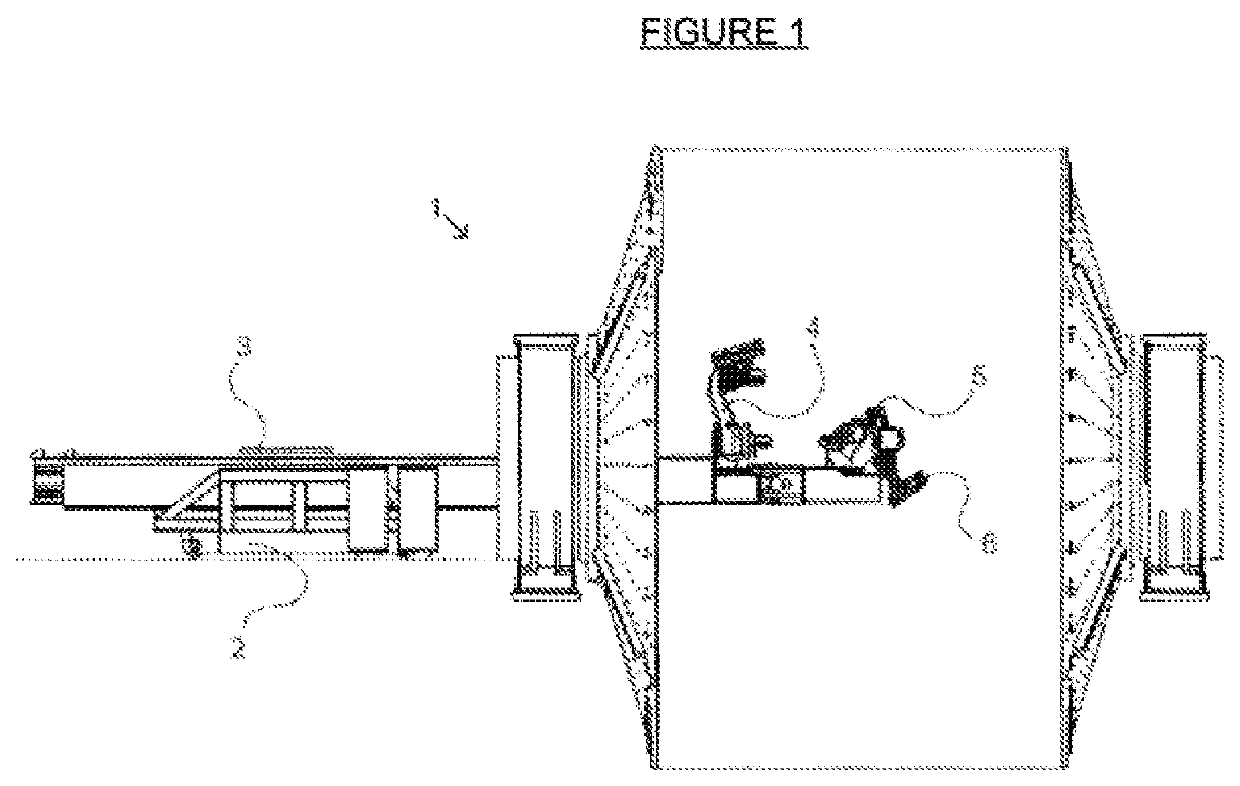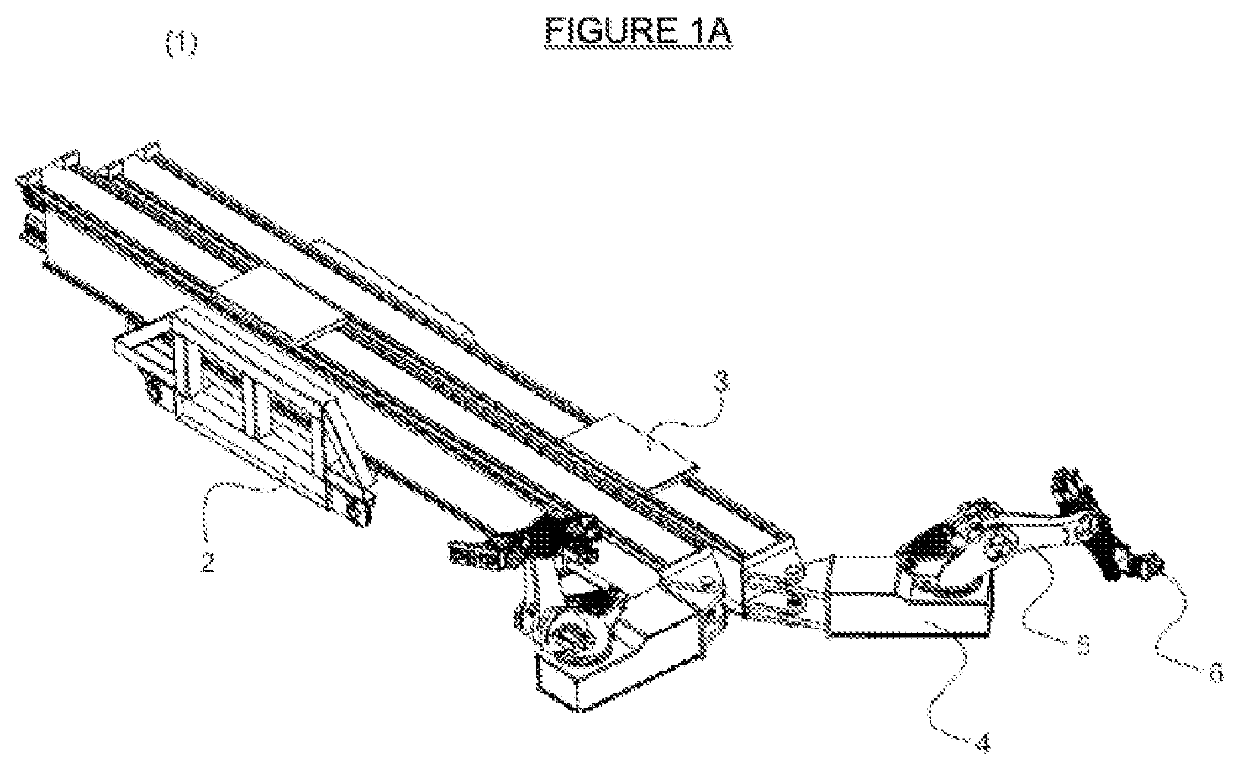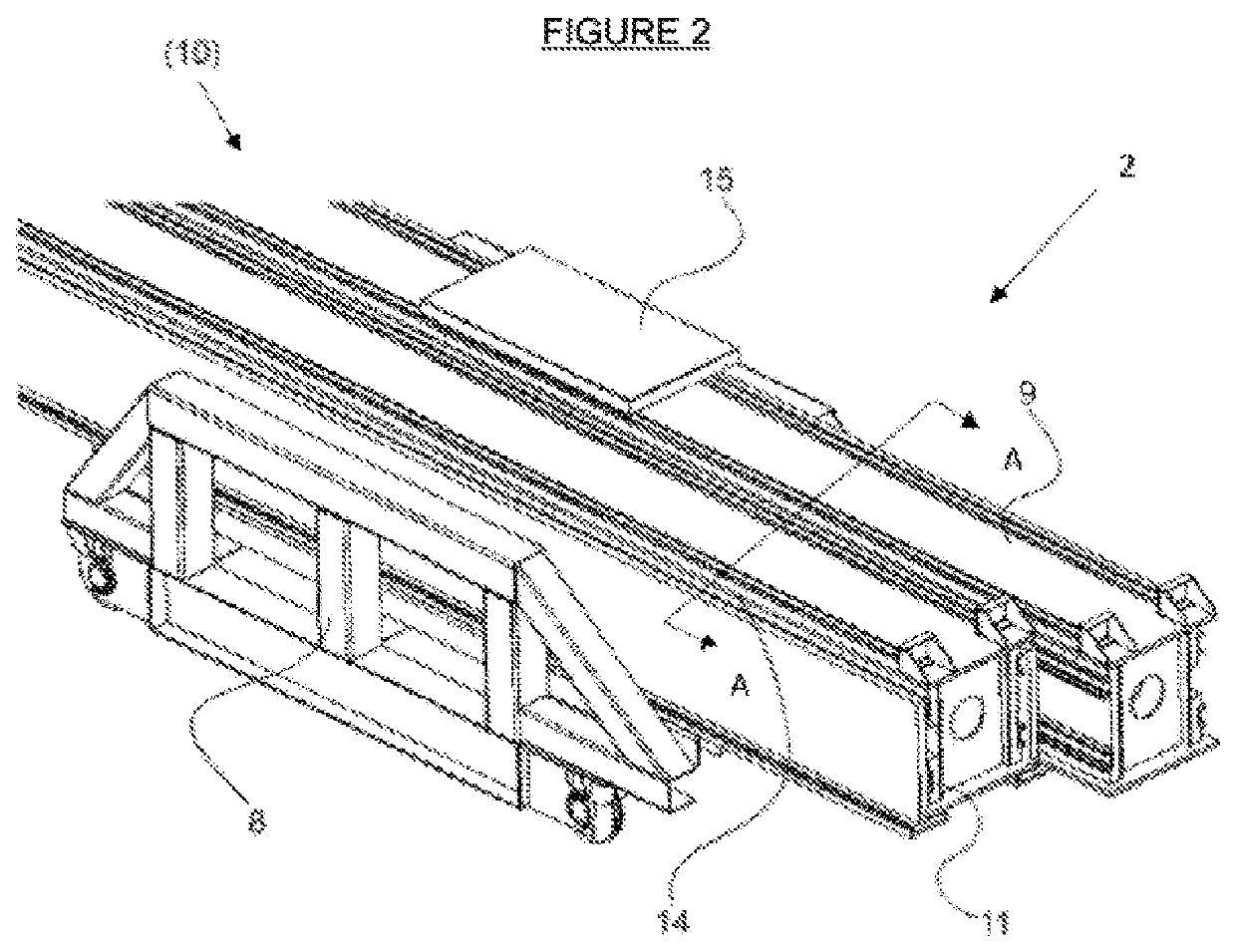System and method for changing liners, the configuration of which allows the automated removal and insertion of liners of a mill used for ore grinding
a technology for ore grinding mills and liners, which is applied in the field of replacement of wear elements, can solve the problems of reducing effective working times, affecting the efficiency of grinding, and affecting the operation of grinding mills, so as to improve the efficiency of grinding mills, and improve the degree of precision. the effect of method
- Summary
- Abstract
- Description
- Claims
- Application Information
AI Technical Summary
Benefits of technology
Problems solved by technology
Method used
Image
Examples
Embodiment Construction
[0063]The invention consists of a system and method for changing liners (1), the configuration of which allows the automated removal and installation of liners of a mill used for grinding ore, as schematically illustrated in FIGS. 1 and 1a, comprising at least one support structure (2), at least one system (3) for supplying and moving liners, at least one robotic manipulator system (4) for manipulating the liners, at least one liner manipulation tool (5), at least one artificial vision system (6), and at least one control system (7).
[0064]The support structure (2), illustrated by way of example through FIG. 2, comprises at least one support body or base (8), which allows holding, supporting, and positioning the system for changing liners in a location adjacent to the entrance of the mill where liners from the inner surface of the mill will be changed, wherein said support base or body (8) is arranged outside a mill in which there is supported at least one telescopic beam (9) compris...
PUM
| Property | Measurement | Unit |
|---|---|---|
| degrees of freedom | aaaaa | aaaaa |
| degrees of freedom | aaaaa | aaaaa |
| degrees of freedom | aaaaa | aaaaa |
Abstract
Description
Claims
Application Information
 Login to View More
Login to View More - R&D
- Intellectual Property
- Life Sciences
- Materials
- Tech Scout
- Unparalleled Data Quality
- Higher Quality Content
- 60% Fewer Hallucinations
Browse by: Latest US Patents, China's latest patents, Technical Efficacy Thesaurus, Application Domain, Technology Topic, Popular Technical Reports.
© 2025 PatSnap. All rights reserved.Legal|Privacy policy|Modern Slavery Act Transparency Statement|Sitemap|About US| Contact US: help@patsnap.com



